Содержание
- 2. is the act of using, or promoting the use of, multiple languages, either by an individual
- 3. Multilingual speakers outnumber monolingual speakers in the world's population. Multilingualism is becoming a social phenomenon governed
- 4. A multilingual person is one who can communicate in more than one language, be it actively
- 5. The terms bilingual and trilingual are used to describe comparable situations in which two or three
- 6. Poly (Greek: πολύς) means "many", glot (Greek: γλώττα) means "language". What is a multi-lingual person?
- 7. Multilingual speakers have acquired and maintained at least one language during childhood, first language (L1). The
- 8. Children acquiring two languages are called simultaneous bilinguals. Take note! In the case of simultaneous bilinguals,
- 9. There is a possibility for a child to become naturally trilingual by having a mother and
- 10. Example An English-speaking father married to a Mandarin Chinese speaking mother with the family living in
- 11. Some group of academics argues for the maximal definition of multilingualism. Maximal: Speakers are as proficient
- 12. Another group of academics argues for the minimal definition of multilingualism, based on use. Minimal: Tourists
- 13. Bilingualism as an individual attribute: a psychological state of an individual who has access to two
- 14. Bilingualism as a societal attribute: two languages are used in a community and that a number
- 15. “Even if someone is highly proficient in two or more languages, his or her so-called communicative
- 16. Linguists have distinguished various types of multilingual competence, which can be put into two categories: Compound
- 17. Compound Bilinguals words and phrases in different languages are with the same concepts. Example: 'chien' and
- 18. Coordinate Bilinguals Words and phrases in the speaker's mind are all related to their own unique
- 19. In these individuals, one language, usually the first language, is more dominant than the other, and
- 20. In these individuals, one language, usually the first language, is more dominant than the other, and
- 21. A sub-group of the latter is the subordinate bilingual, which is typical of beginning second language
- 22. Many theorists are now beginning to view bilingualism as a "spectrum or continuum of bilingualism" that
- 23. Distractive bilingualism or Semilingualism. Cognitive Ability
- 24. When acquisition of the first language is interrupted and insufficient or unstructured language input follows from
- 25. Literacy plays an important role in the development of language in these immigrant children. Those who
- 26. Receptive bilinguals are those who have the ability to understand a second language, but do not
- 27. Receptive bilingualism is not the same as mutual intelligibility, which is the case of a native
- 28. Widespread multilingualism is one form of language contact. Multilingualism was more common in the past. In
- 29. When all speakers are multilingual, linguists classify the community according to the functional distribution of the
- 30. When all speakers are multilingual, linguists classify the community according to the functional distribution of the
- 31. Diglossia If there is a structural functional distribution of the languages involved, the society is termed
- 32. Ambilingualism a region is called ambilingual if this functional distribution is not observed. In a typical
- 33. Ambilingualism Example: Malaysia and Singapore, which fuses the cultures of Malays, China, and India. Multilingualism within
- 34. Bipart-lingualism if more than one language can be heard in a small area, but the large
- 35. Some multilinguals use code-switching, a term that describes the process of 'swapping' between languages. In many
- 36. Sequential model In this model, learners receive literacy instruction in their native language until they acquire
- 37. Sequential model In this model, learners receive literacy instruction in their native language until they acquire
- 38. Bilingual model In this model, the native language and the community language are simultaneously taught. The
- 39. Coordinate model This model posits that equal time should be spent in separate instruction of the
- 40. Cummins' research concluded that the development of competence in the native language serves as a foundation
- 41. Early vs. Late bilinguals Early bilingual: someone who has acquired two languages early in childhood (usually
- 42. Balanced vs. Dominant bilinguals Balanced bilingual: someone whose mastery of two languages is roughly equivalent. Dominant
- 43. Successive vs. Simultaneous bilinguals Successive bilingualism: Learning one language after already knowing another. This is the
- 44. Successive vs. Simultaneous bilinguals Simultaneous bilingualism: Learning two languages as "first languages". That is, a person
- 45. Successive vs. Simultaneous bilinguals Receptive bilingualism: Being able to understand two languages but express oneself in
- 46. Additive vs. Subtractive bilinguals Additive bilingual: The learning of a second language does not interfere with
- 47. Elite vs. Folk bilinguals Elite bilingual: Individuals who choose to have a bilingual home, often in
- 48. Cummins' research concluded that the development of competence in the native language serves as a foundation
- 50. Скачать презентацию

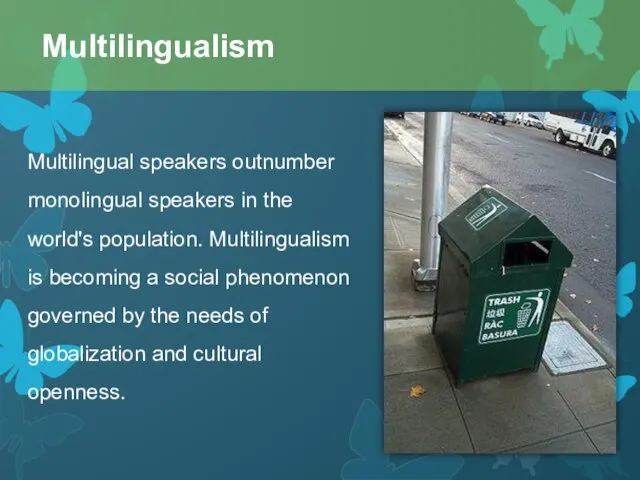
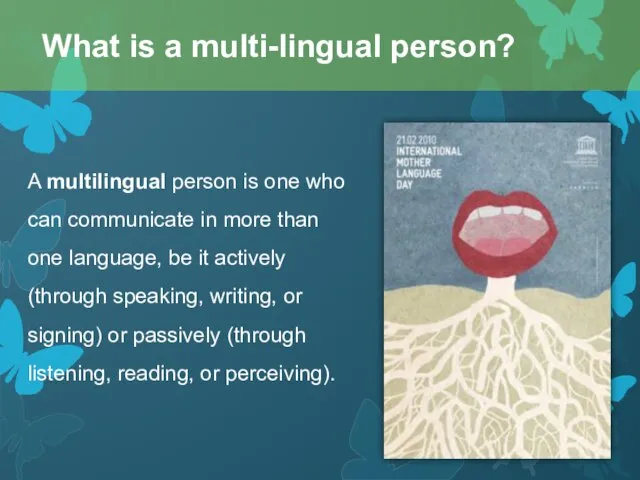

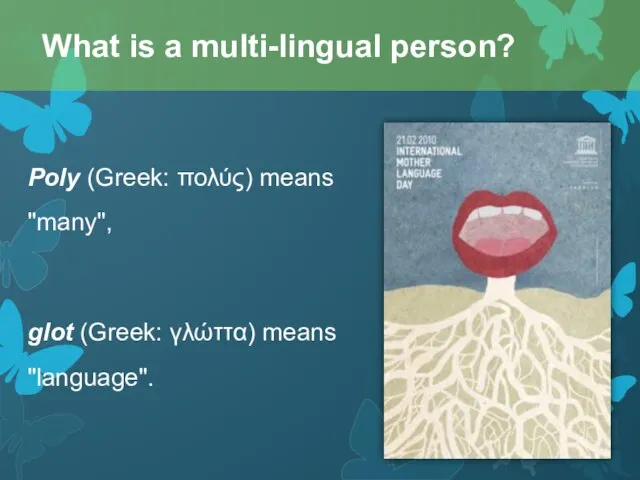

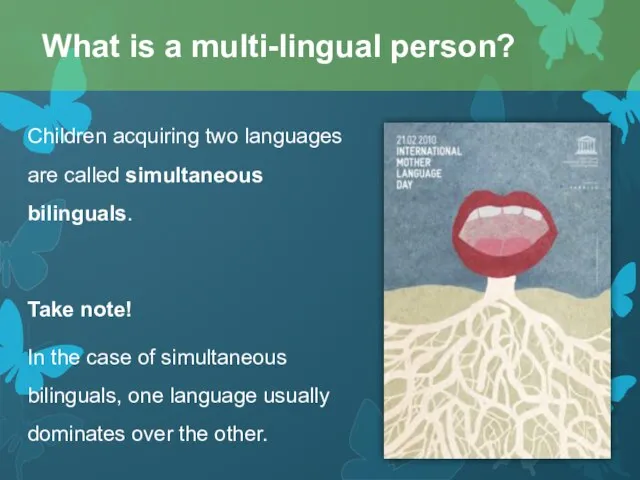
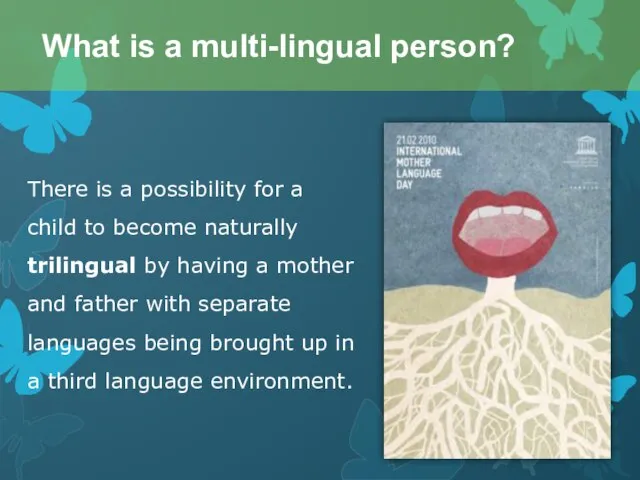
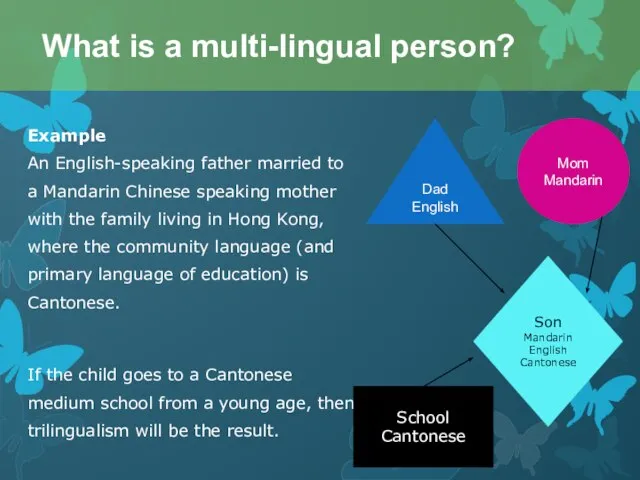


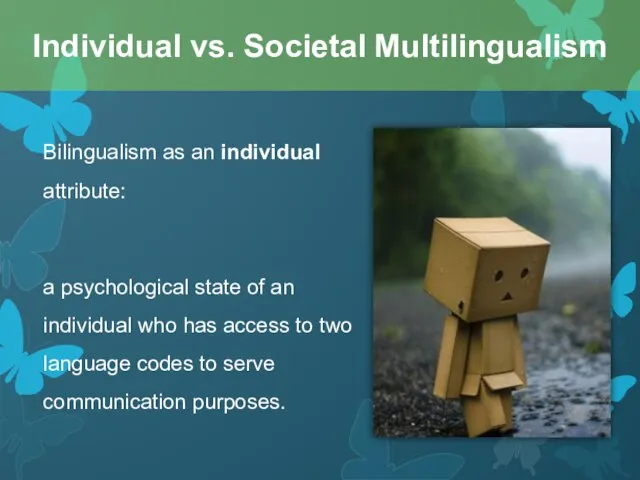
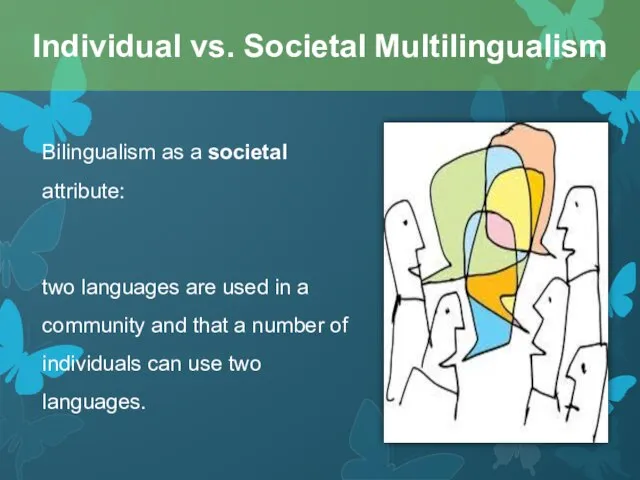
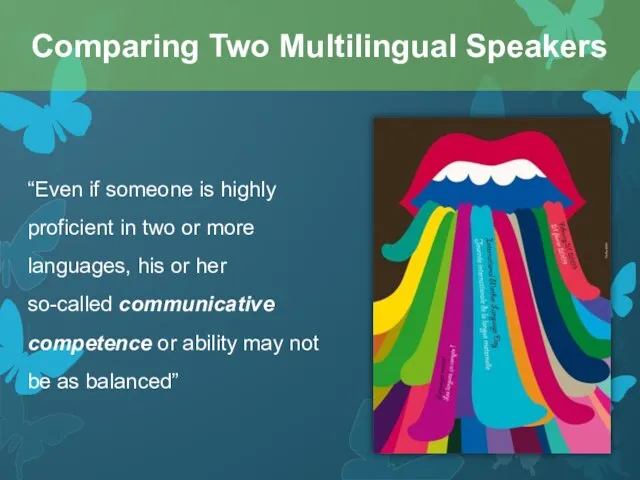
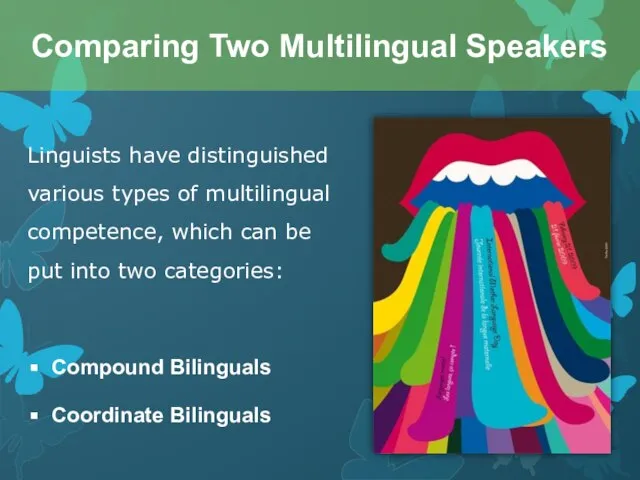
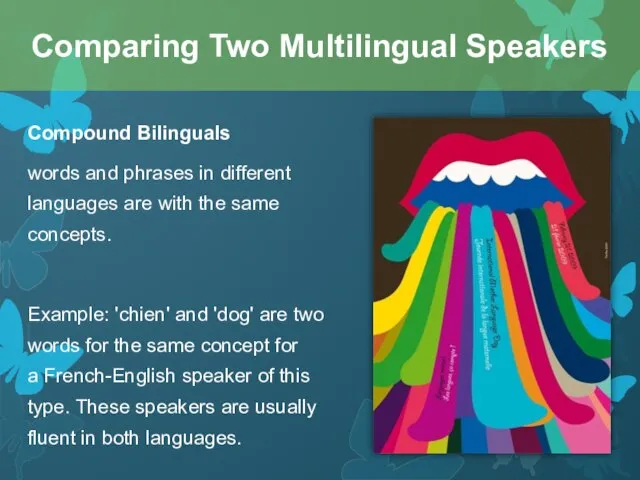


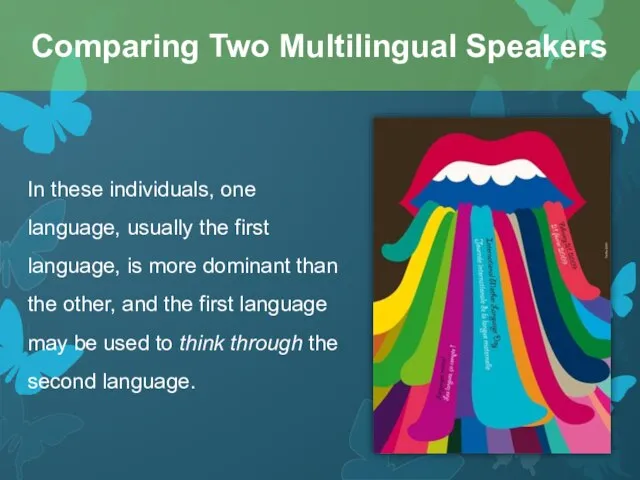
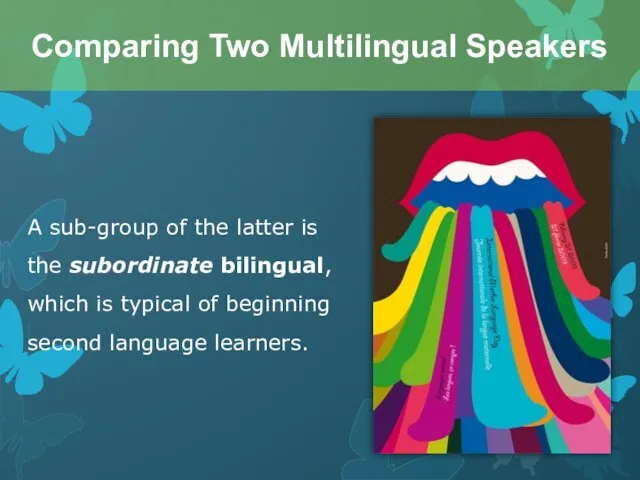
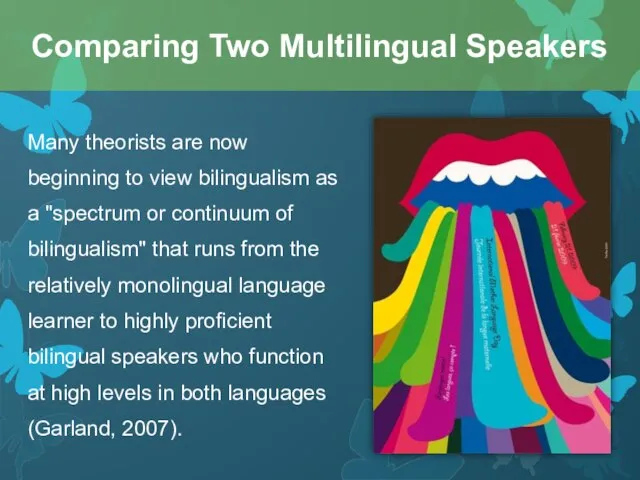





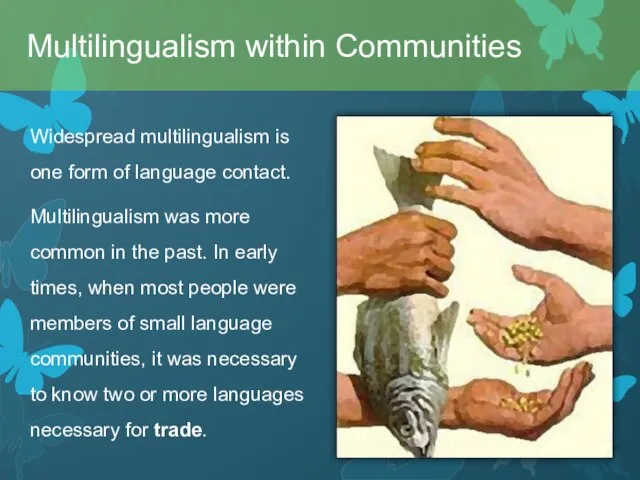
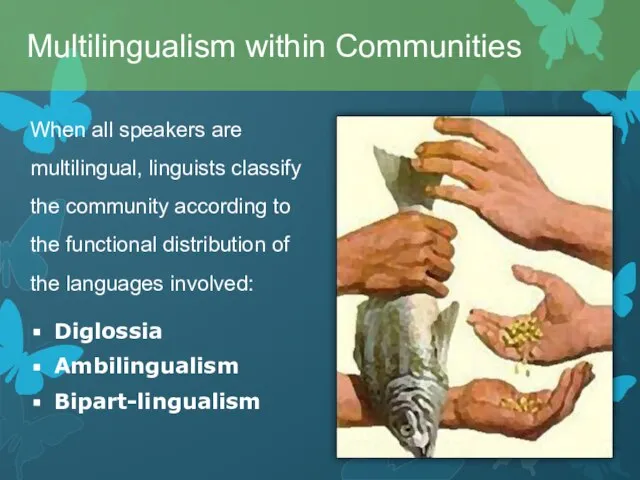
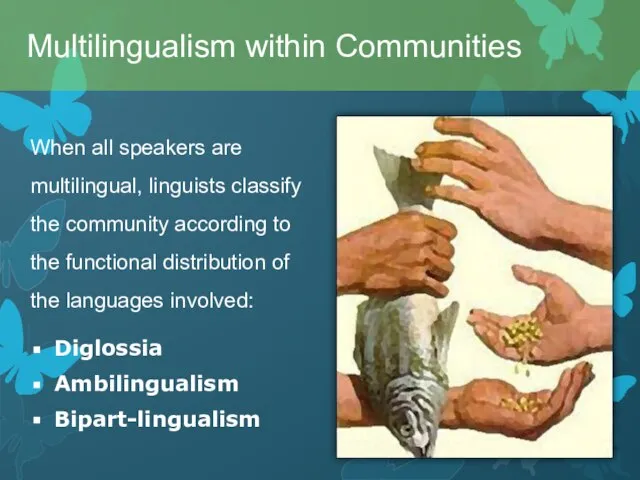

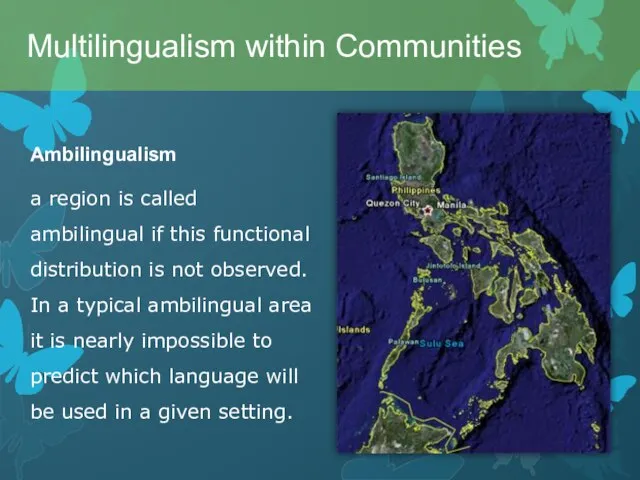

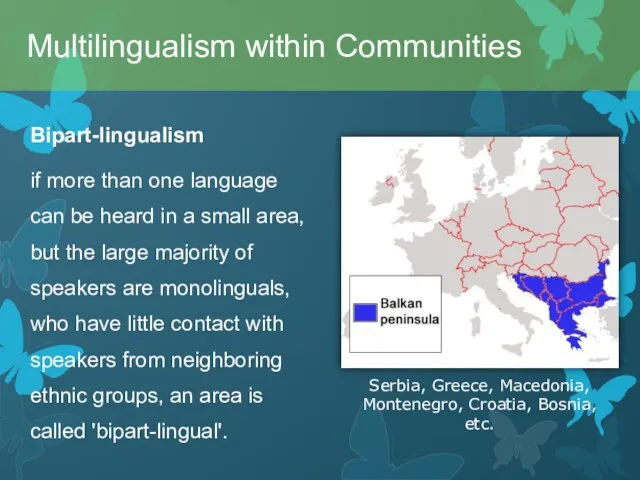
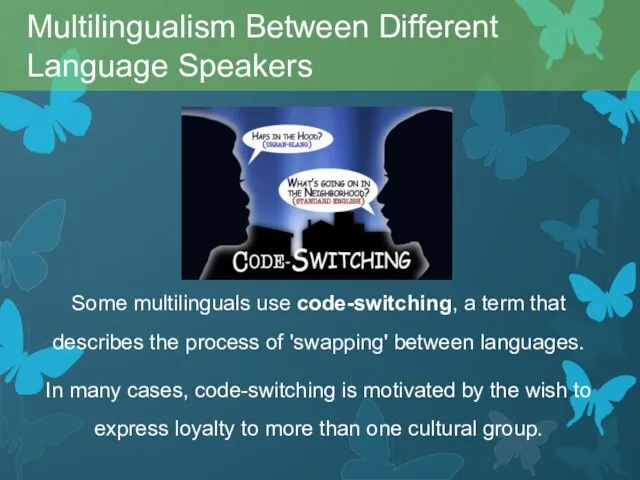
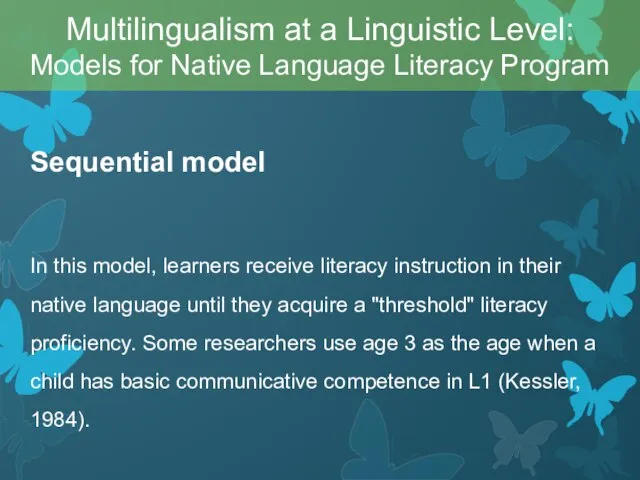
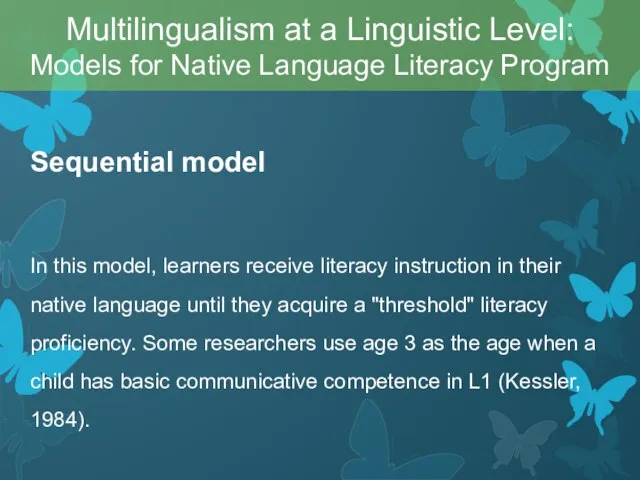

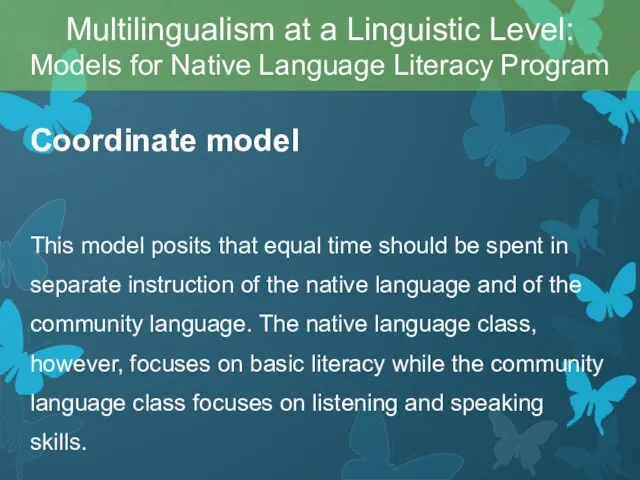
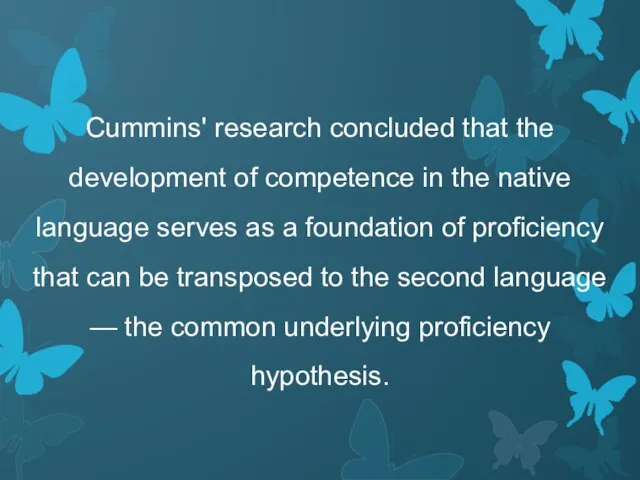
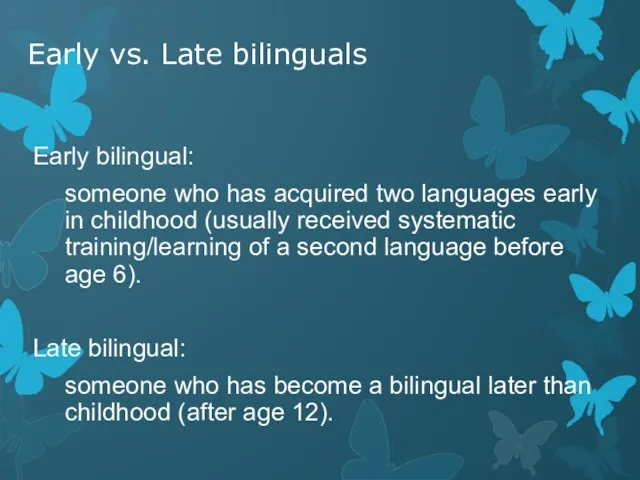
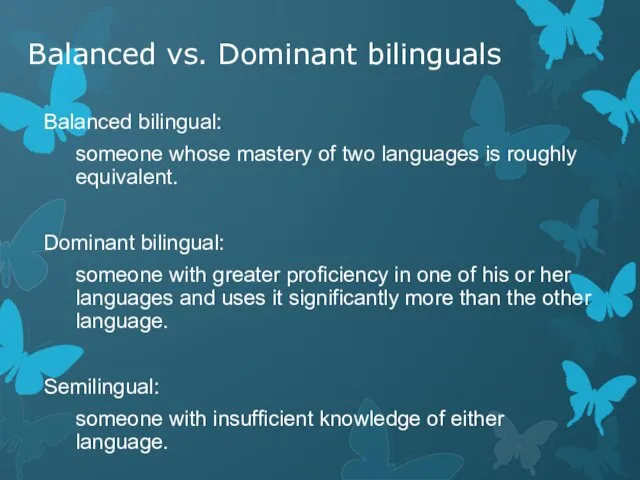
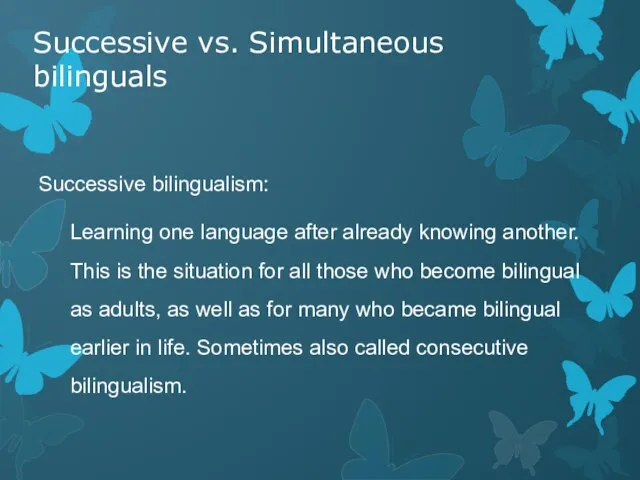


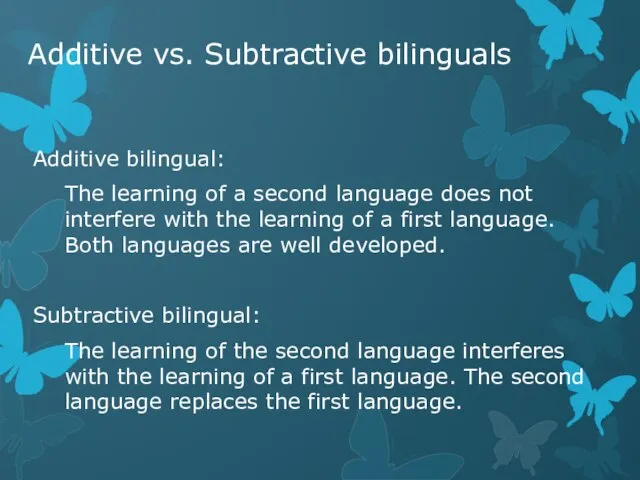
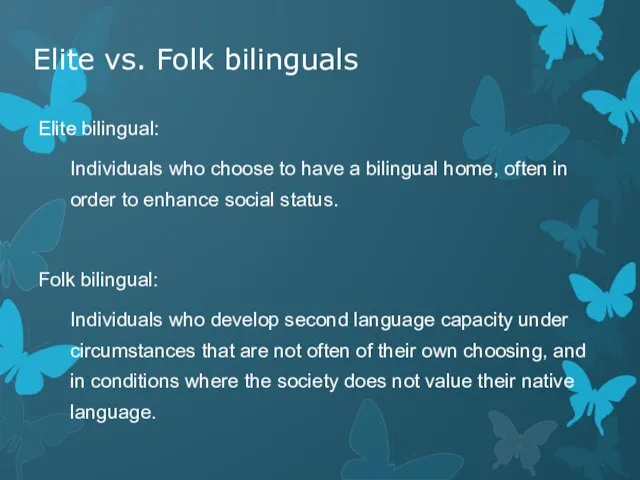
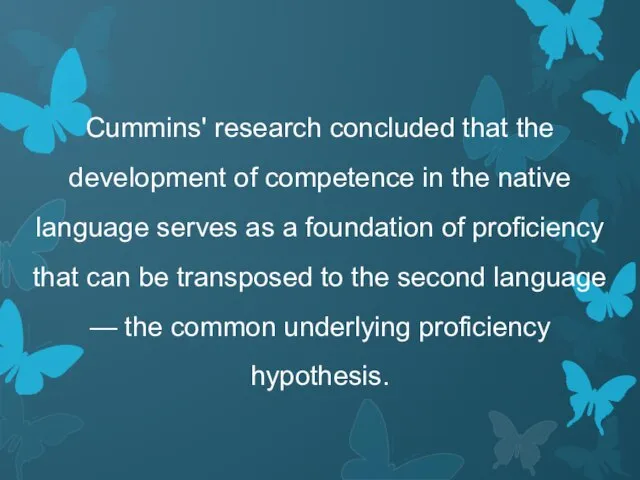
 What time is it
What time is it Interactive english. Main idea
Interactive english. Main idea Present simple tense (настоящее простое время). Случаи употребления
Present simple tense (настоящее простое время). Случаи употребления Do you think the son was addicted to playing video games?
Do you think the son was addicted to playing video games? 10 sights of the world
10 sights of the world Quest. Wake Sponge Bob
Quest. Wake Sponge Bob Food, shopping, restaurants, pubs, … (vocabulary)
Food, shopping, restaurants, pubs, … (vocabulary) Раздел 5 ЗОЖ
Раздел 5 ЗОЖ English cuisine
English cuisine Lesson nineteen - 19
Lesson nineteen - 19 A Magic Island!
A Magic Island! Les entreprises françaises en Russie Primakova Maria, Beznochuk Bogdan, Beloglazova Yulia
Les entreprises françaises en Russie Primakova Maria, Beznochuk Bogdan, Beloglazova Yulia Pronouns. Местоимения (часть 4)
Pronouns. Местоимения (часть 4) Alisa’s story
Alisa’s story Living in the city and in the country
Living in the city and in the country Pronouns. Местоимения
Pronouns. Местоимения Настоящее непрерывное время
Настоящее непрерывное время Презентация на тему Healthy lifestyle
Презентация на тему Healthy lifestyle  Презентация на тему Достопримечательности Америки
Презентация на тему Достопримечательности Америки  Презентация на тему Olympic games (Олимпийские игры)
Презентация на тему Olympic games (Олимпийские игры)  Interesting places of Wales
Interesting places of Wales Where is Teddy?
Where is Teddy? Adjectives
Adjectives There is are
There is are In the park. 3 класс
In the park. 3 класс This is Muzzy. Задание №1
This is Muzzy. Задание №1 Эмоции на английском
Эмоции на английском Outcomes Upper Intermediate Vocabulary Builder
Outcomes Upper Intermediate Vocabulary Builder